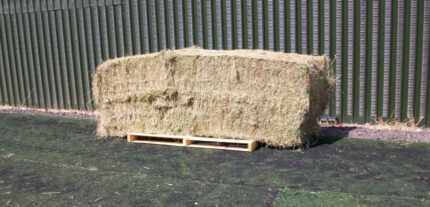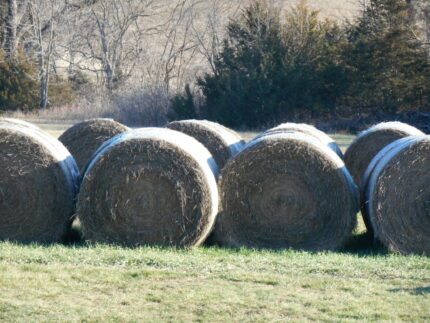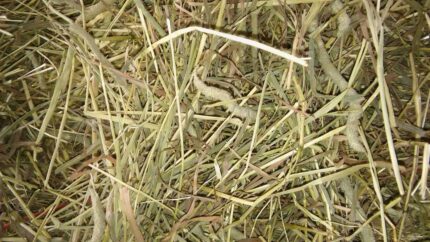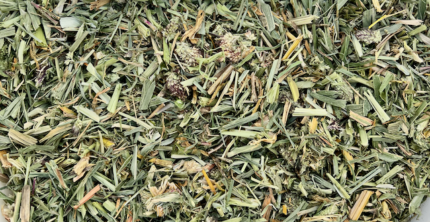Ryegrass Hay – Big Bales
Ryegrass hay, derived from the perennial ryegrass plant (Lolium perenne), is a popular forage option for livestock and a suitable dietary component for herbivorous pets like rabbits and guinea pigs. It offers a range of nutritional benefits and is widely cultivated in various regions around the world.
*Characteristics:*
– *Grass Variety:* Ryegrass hay comes from the perennial ryegrass plant, a cool-season grass known for its rapid growth and high yield. It belongs to the genus Lolium and is distinguishable by its flat, folded leaves and dense, cylindrical seed heads.
– *Texture:* Ryegrass hay typically has a medium to fine texture, with soft, pliable strands that are palatable and easy for animals to chew and digest.
– *Color:* The color of ryegrass hay can vary depending on factors such as the stage of growth at harvest and the drying process. It ranges from a vibrant green when freshly cut to a golden yellow or beige when dried.
– *Aroma:* High-quality ryegrass hay emits a fresh, grassy aroma indicative of its nutritional value and freshness.
*Nutritional Composition:*
– *Protein:* Ryegrass hay is notable for its relatively high protein content compared to other grass hays, making it a valuable source of amino acids essential for muscle maintenance and growth.
– *Fiber:* Like other grass hays, ryegrass hay is rich in dietary fiber, which supports healthy digestion and prevents gastrointestinal issues in herbivorous animals.
– *Vitamins and Minerals:* Ryegrass hay contains essential vitamins and minerals such as vitamin A, vitamin D, calcium, and phosphorus, which are crucial for overall health and well-being.
*Benefits:*
– *Digestive Health:* The fiber content of ryegrass hay promotes optimal digestive function by stimulating gut motility and preventing conditions like bloating and gastrointestinal stasis in small animals.
– *Muscle Maintenance:* The higher protein content of ryegrass hay compared to other grass hays makes it particularly beneficial for animals with higher protein requirements, such as growing rabbits and pregnant or lactating guinea pigs.
– *Palatability:* Many animals find ryegrass hay palatable, making it an attractive dietary option that encourages regular consumption and helps ensure adequate nutrient intake.
– *Dental Health:* Chewing on ryegrass hay aids in the natural wearing down of animals’ continuously growing teeth, which is essential for preventing dental problems like malocclusion and overgrowth.
*Harvesting and Processing:*
– Ryegrass hay is typically harvested in the spring or early summer when the grass is at its peak nutritional value and before it matures and becomes coarse.
– After cutting, the grass is allowed to dry in the sun until it reaches the desired moisture content, typically around 10-15%.
– Once sufficiently dried, the hay is baled and stored in a dry, well-ventilated area to maintain its quality and freshness.
*Quality Considerations:*
– *Freshness:* Choose ryegrass hay that has a fresh, grassy aroma and vibrant green color, indicating its nutritional value and freshness. Avoid hay that appears dusty, moldy, or musty, as these can indicate poor quality and potential health risks for animals.
– *Texture:* Opt for ryegrass hay with a soft, pliable texture and long strands, which are easier for animals to chew and digest.
– *Cleanliness:* Ensure the hay is free from debris, weeds, and pests that may pose a health hazard to animals.
In conclusion, ryegrass hay is a nutritious and beneficial forage option for a variety of herbivorous animals. Its high protein content, palatability, and digestive benefits make it a valuable addition to the diet, supporting overall health, muscle maintenance, and dental wear in pets and livestock alike. When selecting ryegrass hay, prioritize freshness, texture, and cleanliness to ensure the highest quality for your furry companions.



















Reviews
There are no reviews yet.